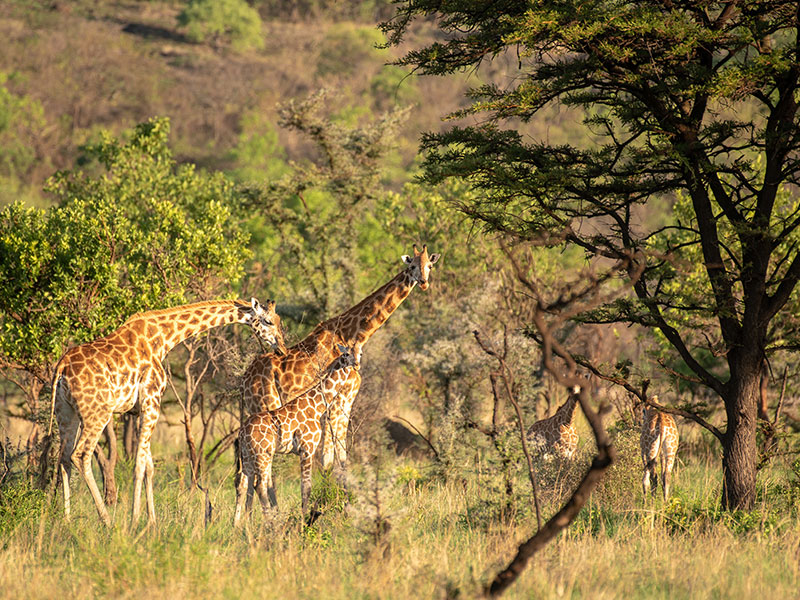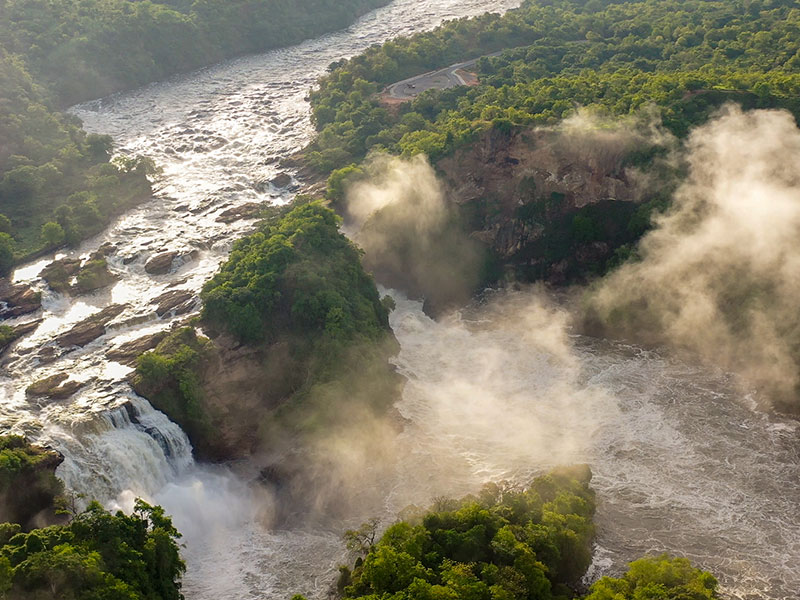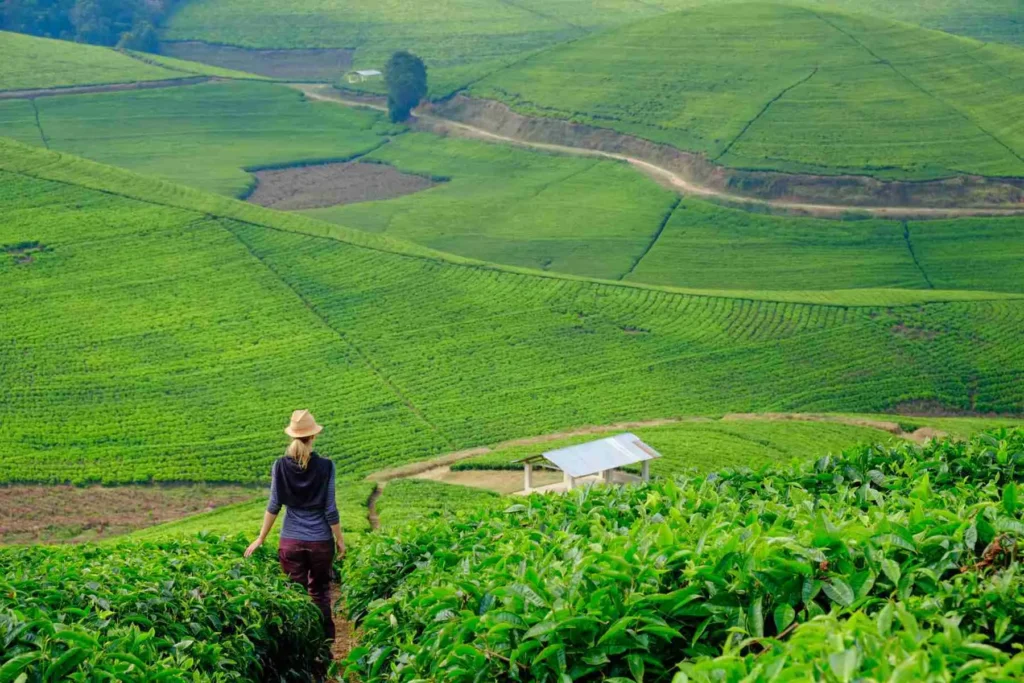The Uganda Rwanda Safari Combination offers travelers an extraordinary opportunity to experience the best of two remarkable East African destinations in a single journey. Uganda and Rwanda are neighboring countries that share much more than just a border; they share rich biodiversity, lush landscapes, vibrant cultures, and unforgettable wildlife encounters. A combined safari allows visitors to explore gorilla trekking adventures, scenic lakes, volcanic ranges, and cultural interactions in both countries — creating one of the most rewarding African safari experiences imaginable.
Whether you begin your journey in Rwanda and cross into Uganda or the other way around, this unique combination introduces you to a mix of pristine wilderness, ancient traditions, and modern African beauty. From the lush jungles of Bwindi Impenetrable Forest to the misty volcanoes of Rwanda, each moment in this journey promises adventure and connection with nature.
Why Combine Uganda and Rwanda Safaris
Combining Uganda and Rwanda safaris is a smart choice for travelers looking to maximize their time and experience the diversity of East Africa. The two countries are geographically close, making it easy to travel between major attractions such as Volcanoes National Park in Rwanda and Bwindi Impenetrable National Park in Uganda.
Both countries offer world-class gorilla trekking, but Uganda provides more extensive wildlife viewing options and larger national parks, while Rwanda offers a more compact, luxurious, and accessible safari experience. Together, they create a perfect blend of adventure, relaxation, and discovery.
Top Highlights of the Uganda Rwanda Safari Combination
1. Gorilla Trekking Adventures
One of the biggest draws for combining these safaris is the opportunity to experience gorilla trekking in both countries. In Uganda, Bwindi Impenetrable National Park and Mgahinga Gorilla National Park are home to more than half of the world’s remaining mountain gorillas. Trekking here is an immersive experience through dense rainforests, where you’ll encounter these gentle giants in their natural habitat.
Across the border, Rwanda’s Volcanoes National Park provides a more luxury-oriented gorilla trekking experience. The terrain is mountainous but beautifully scenic, offering clear views of the Virunga Volcanoes. The gorilla encounters in both countries are equally moving, yet each provides a distinct experience due to differences in terrain, group size, and accessibility.
2. Golden Monkey Tracking
While gorillas are the stars of the show, the golden monkeys add a playful twist to your adventure. In Volcanoes National Park (Rwanda) and Mgahinga Gorilla National Park (Uganda), travelers can track these lively primates leaping between bamboo trees. Their striking golden-orange fur and social behavior make them a delight to watch and photograph.
This activity complements gorilla trekking perfectly, as it requires less physical effort and offers a fun, engaging experience in the lush highland forests of the Virunga region.
3. Game Drives and Wildlife Encounters
Uganda’s extensive national parks, including Queen Elizabeth, Murchison Falls, and Lake Mburo, offer incredible wildlife safaris that Rwanda cannot match in scale. Visitors can enjoy classic game drives to spot elephants, buffaloes, lions, leopards, hippos, and giraffes.
In Murchison Falls National Park, the mighty Nile River squeezes through a narrow gorge to form the world’s most powerful waterfall — a breathtaking sight and sound. Meanwhile, Queen Elizabeth National Park offers tree-climbing lions in the Ishasha sector and boat cruises along the Kazinga Channel teeming with hippos and crocodiles.
Rwanda’s Akagera National Park, on the other hand, has made a strong comeback and is now home to the Big Five — lions, elephants, rhinos, buffaloes, and leopards — offering visitors a high-quality wildlife experience in a compact park.
4. Cultural and Community Experiences
Both Uganda and Rwanda boast rich and diverse cultures. In Uganda, travelers can visit the Batwa pygmy communities, traditional villages, and local craft markets. The warm hospitality and traditional dances offer insight into rural African life.
In Rwanda, the Iby’Iwacu Cultural Village near Volcanoes National Park is a must-visit. Here, you can learn about traditional Rwandan life, dance to the rhythmic drumming, and hear inspiring stories of cultural transformation and resilience following the 1994 genocide.
These experiences allow visitors to connect deeply with local people, adding meaning and authenticity to their safari journey.
5. Scenic Landscapes and Natural Wonders
The landscapes of Uganda and Rwanda are breathtaking. Rwanda, known as the “Land of a Thousand Hills,” features rolling green hills, terraced farms, and picturesque lakes. Lake Kivu provides a serene setting for relaxation after your gorilla trekking adventure, with opportunities for kayaking and boat rides.
Uganda, on the other hand, showcases vast savannahs, snow-capped Rwenzori Mountains, and the source of the River Nile in Jinja. The lush tropical rainforests and crater lakes of southwestern Uganda create some of the most photogenic scenes in East Africa.
Suggested Uganda Rwanda Safari Combination Itinerary
A typical combined safari may last between 10 to 14 days, depending on your interests and pace. Here’s a sample itinerary outline:
- Day 1: Arrival in Kigali, Rwanda, and city tour.
- Day 2: Drive to Volcanoes National Park and visit Iby’Iwacu Cultural Village.
- Day 3: Gorilla trekking in Volcanoes National Park.
- Day 4: Cross into Uganda via Cyanika border and drive to Bwindi Impenetrable Forest.
- Day 5: Gorilla trekking in Bwindi and community visit.
- Day 6: Drive to Queen Elizabeth National Park.
- Day 7: Game drive and boat cruise along Kazinga Channel.
- Day 8: Drive to Kibale Forest for chimpanzee tracking.
- Day 9: Visit Bigodi Wetland Sanctuary.
- Day 10: Drive to Kampala or Entebbe for departure.
This itinerary can be customized to include Rwanda’s Akagera National Park or Uganda’s Murchison Falls National Park for those who wish to extend their safari experience.
Best Time to Visit Uganda and Rwanda
The best time to visit both Uganda and Rwanda is during the dry seasons — from June to September and December to February. During these periods, the trails for gorilla trekking are less muddy and game viewing is more rewarding.
However, since the region enjoys a generally mild climate, safaris can be enjoyed year-round. Even the rainy seasons (March to May, October to November) have their advantages, such as fewer crowds, lower accommodation rates, and greener landscapes.
Practical Information
- Visa and Border Crossing: Travelers can use the East African Tourist Visa, which allows multiple entries between Uganda, Rwanda, and Kenya.
- Transport: Safaris can be done by 4×4 Land Cruisers or safari vans, offering comfort and great views.
- Health: Yellow fever vaccination is required, and it’s advisable to take malaria precautions.
- Accommodation: Both countries offer a range of accommodations — from luxury lodges to midrange and budget options — ensuring every traveler finds a comfortable place to stay.
Why Choose Afrigaze Uganda Safariz
At Afrigaze Uganda Safariz, we specialize in crafting unforgettable Uganda and Rwanda safari combinations tailored to your interests, budget, and schedule. Our team of local experts ensures that every journey is smooth, safe, and filled with meaningful encounters. Whether you’re seeking gorilla trekking adventures, wildlife safaris, cultural experiences, or scenic relaxation, we’ve got you covered.
Afrigaze Uganda Safariz is committed to responsible tourism that benefits both travelers and local communities. We partner with community-based initiatives, promote conservation, and provide professional guides who are passionate about showcasing the beauty of East Africa.
Book your next Uganda Rwanda Safari Combination with Afrigaze Uganda Safariz and embark on an adventure that connects you with the heart of Africa.
📧 Email: info@afrigazeugandasafariz.com











